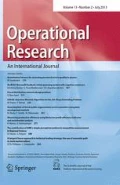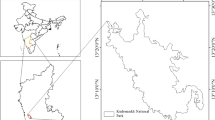Abstract
Forest fires are considered natural phenomena but the magnitude of the problem can be attributed to poor forest management and to the extreme weather conditions. Furthermore, the abolishment of traditional activities related to forests has sent away people from the forests that they used to protect them. The aforementioned reasons result in the annual destruction of large forest areas, agricultural cultivations, industries, animals and even human lives. At the same time, catastrophic floods entail the gradual desolation of the affected areas and large amounts of carbon dioxide along with smoke particles aggravate air quality.
In the present paper, a Decision Support System is proposed capable to support policy makers and services to counteract wildfires destruction danger in lowland Pine forests. The system is composed of two major components: (a) A Wildfire Destruction Danger Index useful for preventive and suppressive measures planning and decision policy making and (b) a Forest Management Planning Decision Support System useful for fire risk reduction through forest management plan. The open architecture of the system allows incorporation of data coming from external sources e.g. satellite systems, meteorological stations etc. All its subsystems can stand alone so as to satisfy the needs of responsible organisations (peripheral institutions of fire brigade, forest inspection and local authorities). The proposed system can be both used as an intergraded operational tool in forest fire management and as a training tool for personnel of various services involved.
Similar content being viewed by others
References
Alexander M.E. (1988). Help with making crown fire hazard assessments. In: W.C. Fisher and S.F. Arno (Editors), protecting people and homes from wildfire in interior west, Dept. of Agriculture, Forest Service, I.F.R.E.S, West. Gen. Tech. Report INT-251, Ogden, UT, pp. 147–156.
Andrews P.L. and Rothermel R.C. (1982). Charts for interpreting wildland fire behaviour characteristics. U.S. Dept. of Agriculture, Forest Service, Intermountain Forest and Range Experiment Station, Gen. Tech. Report INT-131, Ogden UT, pp. 21–30.
Byram G.M. (1973). Combustion of forest fuels. In: A.A., Brown (Editor), Forest fire: control and use. McGraw-Hill, p. 686.
Carega P. (1991). A meteorological index of forest fire hazard in Mediterranean France. International Journal of Wildland Fire, 1, pp. 79–86.
Kaloudis S., Karetsos S., Costopoulou C., Lorentzos N. (2003). A DSS for wildfire damage reduction with UML. In: Z. Harnos, M. Herdon, T.B. Wiwczaroski (Editors), Proc. 4th EFITA Conference, Information Technology for a Better Agri-Food Sector, Environment and Rural Living, Budapest, Hungary, pp. 80–89.
Kaloudis S., Karteris M., Lorentzos N., Sideridis A. (2001). Conceptual framework of a decision support system for the management of lowland pine forests aiming at reducing wildfire damages. In: Radoglou, K. (Editor), Proc. Int. Conference on Forest Research: a challenge for an integrated European approach, Thessaloniki, Greece, pp. 287–292.
Kampichler C., Barthel J., Wieland R. (2000). Species density of foliage-dwelling spiders in field margins: a simple fuzzy rule-based model. Ecological Modelling,129, pp. 87–99.
Karteris M., Sideridis A., Kaloudis S., Protonotarios E., Patrikakis C., Fafali V., Lorentzos N., Kontoravdis D., Yannakopoulos D., Anthonopoulos E.N., Spyridakos A., Thanos A., Siskos I., Yialouris C.P., Voulodimou I., Dimitrakopoulos A., Petropoulos K., Maliappis M., Plytaria M., Makras A. (2002). Information System for Forests Fire Management. TR/172, Infolab, A.U.A.
McBratney A.B. and Odeh I.O. (1997). Application of fuzzy sets in soil science: fuzzy logic, fuzzy measurements and fuzzy decisions. Geoderma,77, pp. 85–113.
Rothermel R.C. (1972). A mathematical model for predicting wildfire spread in wild land fuels. INT-115. Ogden, UT: U.S.D.A., Forest Service, I.F.R.E.S., p. 40.
Rykiel E.J. (1989). Artificial intelligence and expert systems in ecology and natural resources management. Ecological Modelling,46, pp. 3–8.
Van Wagner C.E. (1977). Conditions for the start and spread of crown wildfire. Canadian Journal of Forest Research.7, pp. 23–34.
Viegas D.X. (1997). Fire risk associated to meteorological conditions. In: G. Eftihidis, P. Balabanis, A. Ghazi (Editors), On the advanced study course on wildfire management. Athens, Greece, pp. 227–239.
Viegas D.X., Bovio G., Ferreira A., Nosenzo A., Sol B. (1999). Comparative study of various methods of fire danger evaluation in Southern Europe. International Journal of Wildland Fire,9, pp. 235–246.
Zadeh L.A. (1965). Fuzzy sets. Information and control,8, pp. 338–353.
Zadeh L.A. (1973). Outline of a new approach to the analysis of complex systems and decision processes. IEEE Transactions on Systems, Man and Cybernetics,3, pp. 28–44.
Zadeh L.A. (1990). The birth and evolution of fuzzy logic. International Journal of General Systems,17, pp. 95–105.
Author information
Authors and Affiliations
Corresponding author
Rights and permissions
About this article
Cite this article
Kaloudis, S.T., Lorentzos, N.A., Sideridis, A.B. et al. A Decision Support System for forest fire management. Oper Res Int J 5, 141–152 (2005). https://doi.org/10.1007/BF02944167
Issue Date:
DOI: https://doi.org/10.1007/BF02944167




